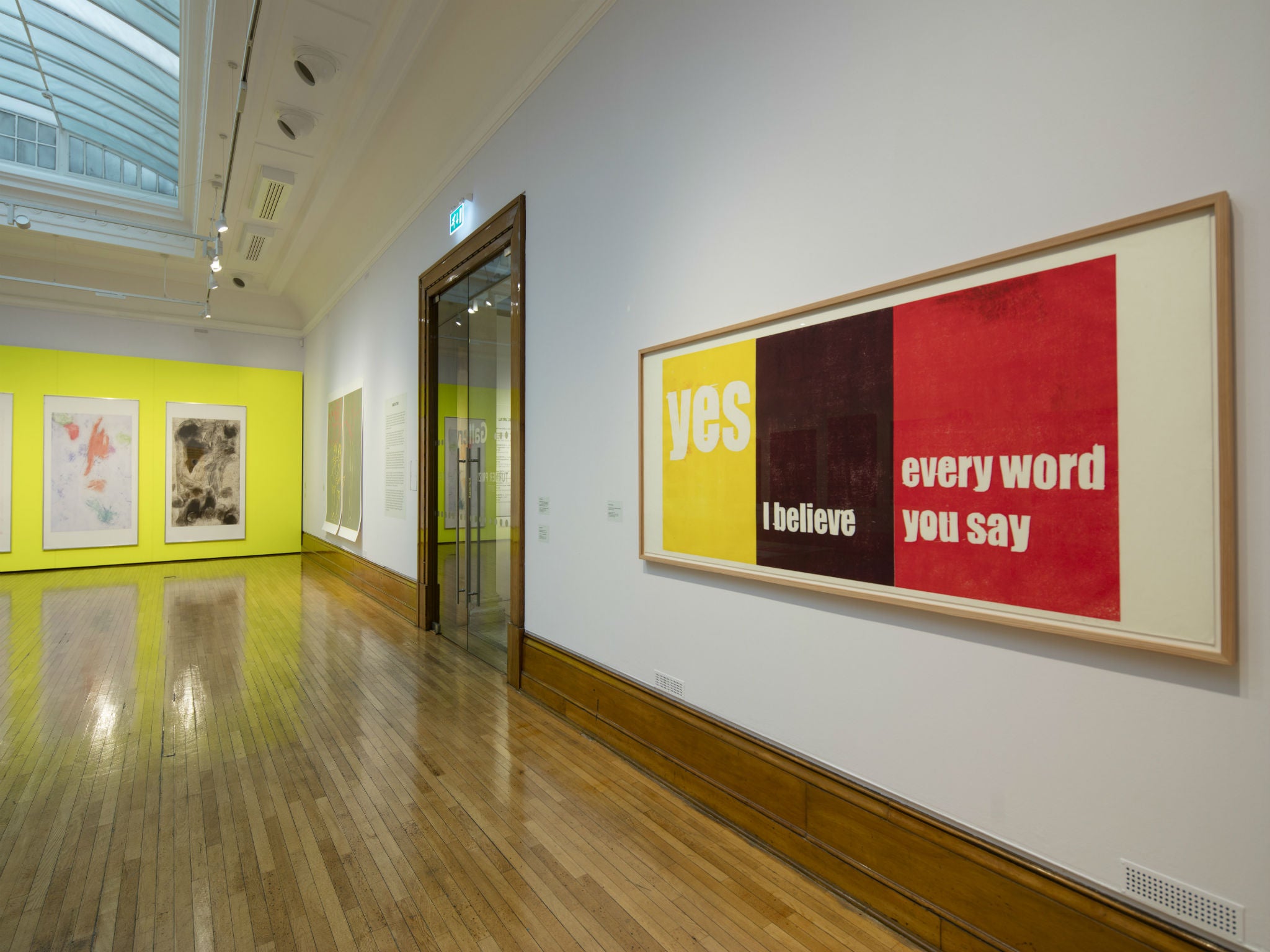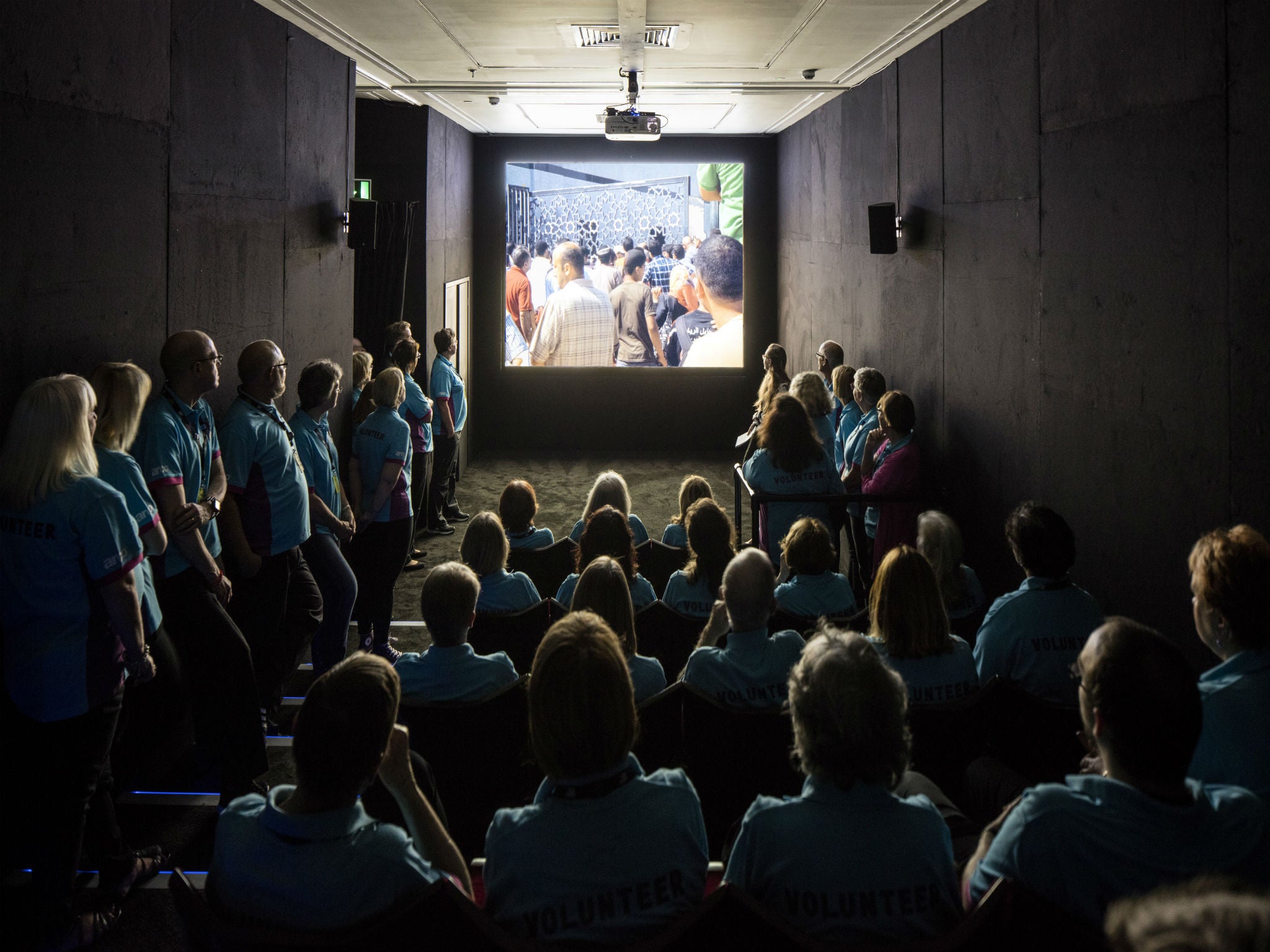By opening up to older artists, is the Turner prize losing its edge?
Hurvin Anderson, Rosalind Nashashibi, Lubaina Himid and Andrea Büttner are this year’s nominees, but they’re all already well established, well supported and well funded – and over 40

Hull is a very distinctive destination. It’s not a place you pass through. It’s a place you arrive at. Hull Trains spirits you up from London, and when you reach this exposed spit of land in East Yorkshire, you (almost) hit the buffers. The only way of leaving again is by going into reverse. To get elsewhere, you have to think again. It’s an old port city, with all the wild, raucous, sea-wind-whipped energies you might expect of such a coming-and-going place. The old cobbled streets beside the canal positively judder and jump to all the Saturday-night street revelry. It’s also the current UK City of Culture.
And now the Turner Prize is here because since 2011 it has been staged somewhere other than at Tate Britain in London. The Turner gets shared around every other year – like a bag of boiled sweets. It’s gone on brisk walkabouts to Glasgow and Gateshead in the recent past. Is it particularly toothsome this year? Over-sugared? Too disgusting for words? None of those things alas, as it happens.
The rules have changed. The upper-age limit restriction has been lifted so that artists of any age can now be in contention with each other for the £25,000 prize money. Is this a problem? It could be. Hockney could win it next year. Fortunately, the gifted dead are not eligible. The mighty Titian will never have to show his faltering hand, even had he not also been ineligible on the grounds that he was a gifted Venetian.
There are four artists in the shortlist, you recall, and each of the losers gets a consolation prize of £5,000. Not bad for a loser. Last year’s winner, the saintly philanthropic Helen Marten shared her winner’s cheque with the losers too so that everyone ended up on even ground. What a triumph of egalitarianism!

The Turner is a strange beast. Always has been. Part triumph, part farce, part tragedy, you never quite know what it’s going to throw up next. Has it really been going for 33 years? Its follies always seem so youthful. Who could ever forget that on-and off light bulb? In the 1990s, it helped to define a group of British artists that came to be known collectively as the YBAs: Hirst, Lucas, Emin. They all either won it or nearly won it. You could argue that the dozen years from 1991 onwards was its best decade. Why? Could it, at least in part, to do with the fact that the upper-age limit of 50 was put in place that year, and that it has remained like that for a quarter of a century? Until now.
The names in the frame during those dozen years have stayed with us, for better or for worse. Let’s name a few of them: Kapoor, Whiteread, Gormley, Hirst, Ofili, McQueen, Tillmans, Creed, Tyson, Wearing. See what I mean? I didn’t even have to give you their Christian names because they are all part of the lumpy furniture that we have all grudgingly inherited. There is one other very important matter in relation to that dozen. (Think back now to what I just said about the upper-age limit). Only one of those artists was over the age of 40. Most were 30 or just a little over.
Now look at this year’s list. There is no one under the age of 40. Two are over the age of 50. The bookies’ favourite – Lubaina Himid – is in her 60s. Now we have a real problem. By wishing to be seen not to discriminate against older artists, the prize has put in place a system that will make it much more difficult not to discriminate against the young and the emerging. Discrimination is almost inevitable because the older and the more mature will be so much more practised and experienced as makers and stagers of exhibitions. Some of them will have the support of their galleries. They will have long experience of exhibition-making (don’t forget that this year’s prize will be awarded, in part at least, for the quality of the Turner show staged here in Hull. That’s something new too). So the whole idea of what we had always imagined the prize to be – a showcase for emerging British talent – has disappeared at a stroke. This year’s favourite is the Professor of Contemporary Art at the University of Central Lancashire.
In other respects – ethnic diversity, ratio of women to men (three to one) – the choice of four seems to tick all the right boxes. Except that the model is fatally flawed. In fact, it is a recipe for future respectability and perhaps even dullness. The range of art chosen may become a little more traditional. Two of the artists on this year’s list are painters. Is it also a super-subtle way of protecting itself from the future threat of vilification by the critics? A fond farewell then to the reckless, often foolish, no-holds-barred energies of youth.

And what of the exhibition itself? The Ferens Art Gallery has done the Turner proud. You could even say that it has given it renewed credibility. But at a cost. Unlike at Tate Britain, where every exhibition has felt slightly squeezed into a corner, this one feels as if it has been allowed to expand into as much space as it needs. It seizes the centre of the stage as soon as you walk into the gallery. What is more, it feels connected with the rest of the permanent collection.
The glass doors enable you to see through to, for example, art from the Netherlands, which rhymes very neatly with the work of Hurvin Anderson, the Birmingham artist of Jamaican parentage who is one of the four. Anderson was taught by Peter Doig, and his landscapes, the way he creates a drifty palimpsest of images, which just about manage to coalesce into a pleasingly lyrical single image, reminds you somewhat of Doig’s habit of evoking part seen, part remembered places.
Andrea Büttner, who divides her time between London and Berlin, has created a sequence of giant woodblock prints, a sequence of supplicating hands, white marks set starkly against a black ground. Elsewhere she pays homage to Simone Weil, juxtaposing quotations from Weil with photographic images.
Himid, born in Tanzania and now living in Preston, re-presents a tableau she first made in 1986 called A Fashionable Marriage. A cast of larger-than-life-size wooden cut-outs reprises the slippery politics of the Thatcher/Reagan era. The whole thing pays homage to Hogarth – the disgustingly corpulent aristocrat has a frilly shirt fashioned from used condoms. Maggie’s forefinger reaches out to tickle a reclining Ronald.

Rosalind Nashashibi re-presents two films, one commissioned by the Imperial War Museum and set in the Gaza Strip called Electrical Gaza, and another, Vivian’s Garden, commissioned by Documenta 14, which troublingly explores the tense relationship of a mother and daughter in Guatemala, refugees from Europe.
What all these artists have in common is that they are well established, well supported and well funded, so you could argue that this is a pleasingly professional show throughout. In fact, it feels a bit like four carefully chosen mini-retrospectives. Who deserves to win? A toss up between Anderson and Himid. Yet the show also bodes ill for the future because as the Turner is now constituted, it robs the young of the opportunity to show off the promise of their excessiveness. It is too much a drift in the general direction of a showering of gifts upon the fortunate.
The Turner Prize 2017 runs at the Ferens Art Gallery, Hull from 26 September to 7 January 2018
Join our commenting forum
Join thought-provoking conversations, follow other Independent readers and see their replies
0Comments